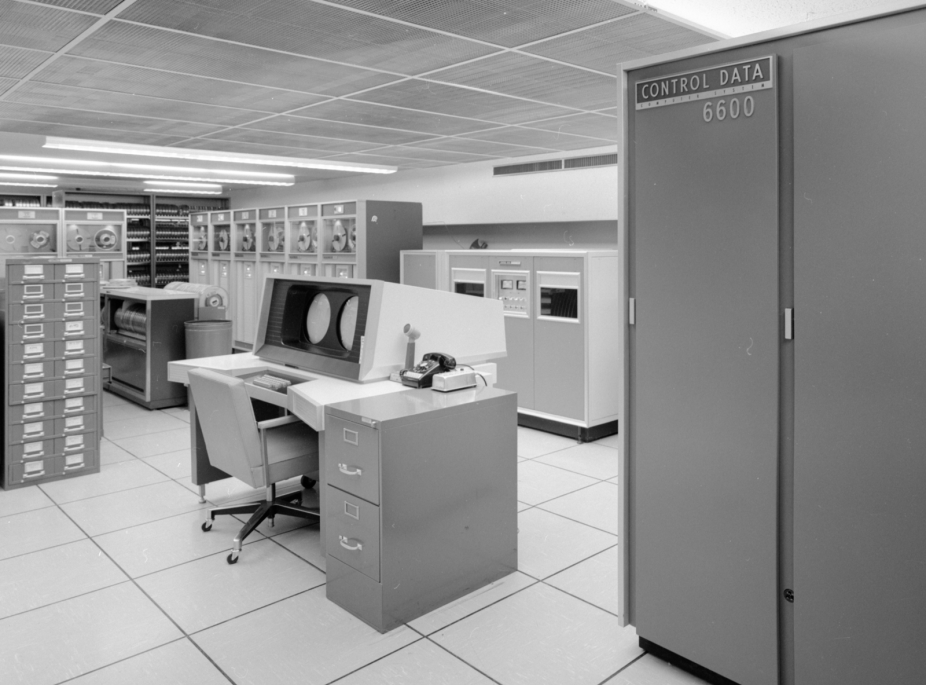CDC 6600

Control Data Corporation
In use: December 30, 1965 - May 20, 1977
Production use
Peak teraflops: 0.00
Processors: 1.00
Clock speed: 0.01GHz
Memory: 0.00TB
Predecessor: CDC 3600
Successor: CDC 7600
Control Data Corporation (CDC) opened a laboratory in 1962 near Chippewa Falls, Wis., where Seymour Cray could complete the design of the CDC 6600 computer without the distractions of a corporate environment. This machine, which was marketed in 1964, sold for around $7 million and was the first computer designed in the Chippewa Falls area.
The CDC 6600 is arguably the first supercomputer. It had the fastest clock speed for its day: 100 nanoseconds. It was one of the first computers to use Freon refrigerant cooling and the first commercial computer to use a cathode-ray tube console. Legend has it that CDC checkout engineers created computer games such as Baseball, Lunar Lander, and Space Wars, which became incentives for getting the machines operational. They are thought to be the first computer games that used monitors.
In August 1964, the NCAR Computing Facility (CF) advisory panel approved the acquisition of a CDC 6600 system. It became apparent to CF staff early in 1965 that software development by CDC for the 6600 was not on a realistic schedule. There were two systems – Simultaneous Processing Operating System (SIPROS) and the Chippewa Operating System (COS) – neither of which could run more than one of the CF's 10 test codes, so the CF began developing its own operating system using a 6600 simulator they had developed on NCAR’s CDC 3600.
NCAR took delivery of its CDC 6600 in late December 1965. Because the NCAR Mesa Laboratory was still under construction, the machine was installed in a University of Colorado building at 3215 Marine Street in Boulder. It was operated there for nearly a year before being moved to the Mesa Lab in December 1966.
The CDC 6600 was a large-scale, solid-state, general-purpose computing system with a distributed architecture – a central scientific processor supported by 10 very fast peripheral processors that handled input and output. With an architecture of only 65 instructions, it was a reduced instruction set computer (RISC) many years before the term was invented.
Input to the computer was by punch cards or seven-channel digital magnetic tape. Output was available from two line printers, a card punch, a photographic plotter, and standard magnetic tape. An interactive display console allowed users to view graphical results as data were being processed.
NCAR's CDC 6600 – serial number 7 – had 65,000 60-bit words of memory and a clock speed of 10 megahertz, about 10 times the speed of other computer systems that were available at the time. It was equipped with a large disk storage device and six high-speed drums as storage intermediate in speed and accessibility between the central core storage and magnetic tapes. The 6600 supported the FORTRAN 66 compiler and a program library.
The CDC 6600 served NCAR for over eleven years and was decommissioned in May of 1977.